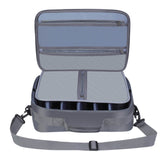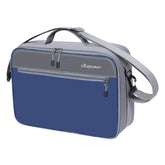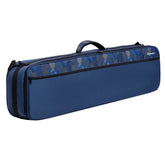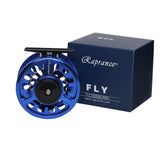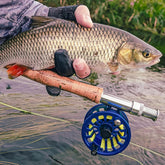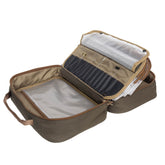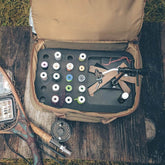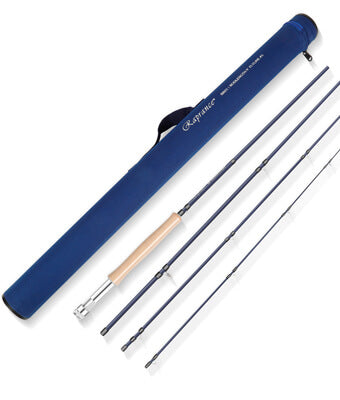Fly Reel: Essential Accessories, DIY Maintenance, and Top Reviews for Anglers
As an avid fly fisher, I recognize that the right fly reel can significantly enhance the fishing experience, especially for targeting trout. Selecting the best fly fishing reel is crucial for beginners and seasoned anglers alike, as it can impact casting accuracy and line control. I’ve found that understanding the various accessories available for fly reels, such as spare spools and line cleaners, can make a noticeable difference in performance and convenience.

Maintaining a fly reel is an essential skill that every angler should master. I often engage in DIY maintenance to ensure my reel operates smoothly, which has extended its lifespan considerably. In this blog post, I'll share valuable tips and techniques for keeping your fly reel in optimal condition, alongside comprehensive reviews of some of the best models on the market today.
Through my experiences, I’ve learned the importance of reliable gear. I’m excited to guide you through the various options and maintenance strategies that can elevate your fly fishing game, whether you’re just starting or looking to refine your skills.
Understanding Fly Reels
I find that fly reels are essential for effective fly fishing. They serve multiple purposes, including line storage, drag control, and line retrieval. Knowing the components and types of reels helps me choose the right one for my experiences on the water.
Components and Functionality
A fly reel consists of several key components. The spool holds the backing and fly line, while the frame supports the structure. The drag system controls the resistance when a fish pulls line.
Types of drag systems include:
- Disc drag: Uses friction between two discs, often made of materials like carbon fiber or rulon. This system provides smooth, adjustable resistance.
- Cork drag: Utilizes cork surfaces for traction. It's known for its simplicity and effectiveness, but may require more maintenance.
Types of Fly Reels
Different types of fly reels cater to specific fishing scenarios. Here are some common options:
- Single action reels: Most basic, offering direct line retrieval. They are easy to use for beginners.
- Multipliers: These reels make it easier to retrieve line quickly, suitable for larger fish.
- Automatic reels: Automatically retrieve line with a spring mechanism. They are great for convenience but less popular among purists.
When considering materials, I find that aluminum reels offer durability, while plastic reels are lightweight and affordable.
Selecting the Right Reel for Your Rod
Choosing the right fly reel depends on my fishing rod and the species I'm targeting. Here’s a simple guide:
- Match the size: The reel must correspond with the rod’s weight class. A 5-weight rod pairs well with a 5-weight reel.
- Consider the drag: If I target larger fish, I need a reel with a reliable drag system. Disc drags generally perform better under strain.
- Weight and balance: A heavier reel can affect rod balance. I prefer a reel that feels comfortable in my hand.
Understanding these factors helps ensure a successful outing on the water.
Maintaining Your Fly Reel
Regular maintenance is essential for extending the life of your fly reel and ensuring its performance. I focus on practical tips for DIY maintenance, knowing when to seek professional help, and how to accessorize for optimal function.
DIY Maintenance Tips
To keep my fly reel in top shape, I start with routine cleaning. After each fishing trip, especially in saltwater conditions, I rinse the reel with fresh water to remove salt and debris. Using a soft brush helps dislodge any particles.
Next, I inspect the drag system and lubricate it with a recommended reel oil. Careful attention to the line guides ensures they remain free of knots or tangles. I also check for scratches or dents, as these can affect the reel's performance.
Finally, storing my reel in a cool, dry place prevents corrosion and premature wear. Using a protective case or pouch adds an extra layer of security. I pay attention to these details to maintain the functionality and durability of my equipment.
When to Seek Professional Repair
I recognize that not all issues can be resolved through DIY methods. If my reel's drag is inconsistent or the spool isn't spinning smoothly, it might be time to seek professional repair. Such problems could indicate internal damage or worn parts requiring specialized tools to fix.
If the reel shows signs of significant corrosion, particularly in saltwater environments, I consult a professional for a thorough cleaning and maintenance check. They can identify hidden issues that I might overlook.
In general, I recommend seeking assistance if I notice any persistent performance problems. This ensures that my equipment remains reliable during fishing trips, helping me avoid frustration.
Accessorizing for Performance
Selecting the right accessories can significantly enhance my fly reel's performance. A good-quality backing line is essential for maximizing my reel's capacity and ensuring I have enough line during a catch.
I also invest in a waterproof reel case to protect my setup from the elements. This is particularly crucial in wet conditions or when fishing in saltwater.
Choosing a compatible landing net and rod holder can help to streamline my fishing experience, making it easier to manage my gear. Investing in these accessories allows me to focus on my technique and improve my fishing success.
Fly Reel Selections
Selecting the right fly reel is crucial for enhancing your fishing experience. Different brands and models cater to a range of preferences and fishing conditions. I will cover reputable brands, highlight reels for specific species, and recommend value options for beginners to help you make an informed choice.
Top Fly Reel Brands and Models
When considering fly reels, I look to trusted brands known for their quality and performance. Here are some of the top names:
- Sage: Renowned for durability and smooth drag systems, the Sage Spectrum series offers excellent options for both freshwater and saltwater fishing.
- Orvis: Their Hydros reels provide a perfect balance of weight and strength, tailored for trout fishing.
- Abel: Known for craftsmanship, their Super Series reels are excellent for those seeking high performance and aesthetics.
- Hatch: I appreciate their innovative designs and great drag systems, suitable for targeting larger species.
Other notable brands include Lamson, Redington, and Hardy, each offering unique features that cater to various fishing preferences.
Best Reels for Specific Species
Certain reels perform better depending on the target species. For instance:
- Trout: Lightweight reels like the Orvis Clearwater are ideal for their balance and ease of use.
- Pike: Larger reels are necessary for pike fishing. The Abel Vaya offers the strength and backing capacity required for these robust fish.
- Saltwater Species: I recommend the Nautilus X series, which has a corrosion-resistant build and a reliable drag system tailored for challenging saltwater environments.
Choosing the right reel based on the species I’m targeting significantly improves my fishing success.
Best Value Reels for Beginners
For beginners, value is key without compromising quality. Here are excellent choices:
- Redington Crosswater: Affordable and durable, it’s an excellent starter reel that performs well across various conditions.
- Echo Base: Lightweight and designed for ease of use, this reel is perfect for newcomers to fly fishing.
- Lamson Liquid: Offers great performance at a reasonable price. It balances weight and drag efficiency effectively.
These reels allow beginners to enjoy fly fishing without a hefty investment while still providing reliability on the water.
Customer Care and Services

I recognize the importance of quality customer care and services in enhancing the fly fishing experience. When engaging with fly reels, responsive support can make a significant difference.
For assistance with products, reliable customer service ensures that my queries regarding fly reels, accessories, or repairs are addressed promptly. Effective communication helps build trust and confidence.
Many brands offer free shipping on orders over a specified amount, allowing me to save on costs. This adds value when purchasing items like fly reels or fly lines.
I appreciate straightforward return policies. If a reel doesn’t meet my expectations, I can return it easily without hassle. This confidence encourages me to explore new products.
When it comes to maintenance, accessing support for DIY tips or product care can prolong the life of my gear. Knowledge about proper cleaning techniques for carbon fibre materials is crucial for durability.
For casting assistance, some companies provide instructional resources or videos. This allows me to refine my skills and make the most of my equipment.
In summary, customer care and services play a vital role in the overall fly fishing experience. Having reliable support enhances my satisfaction and makes the process more enjoyable.

